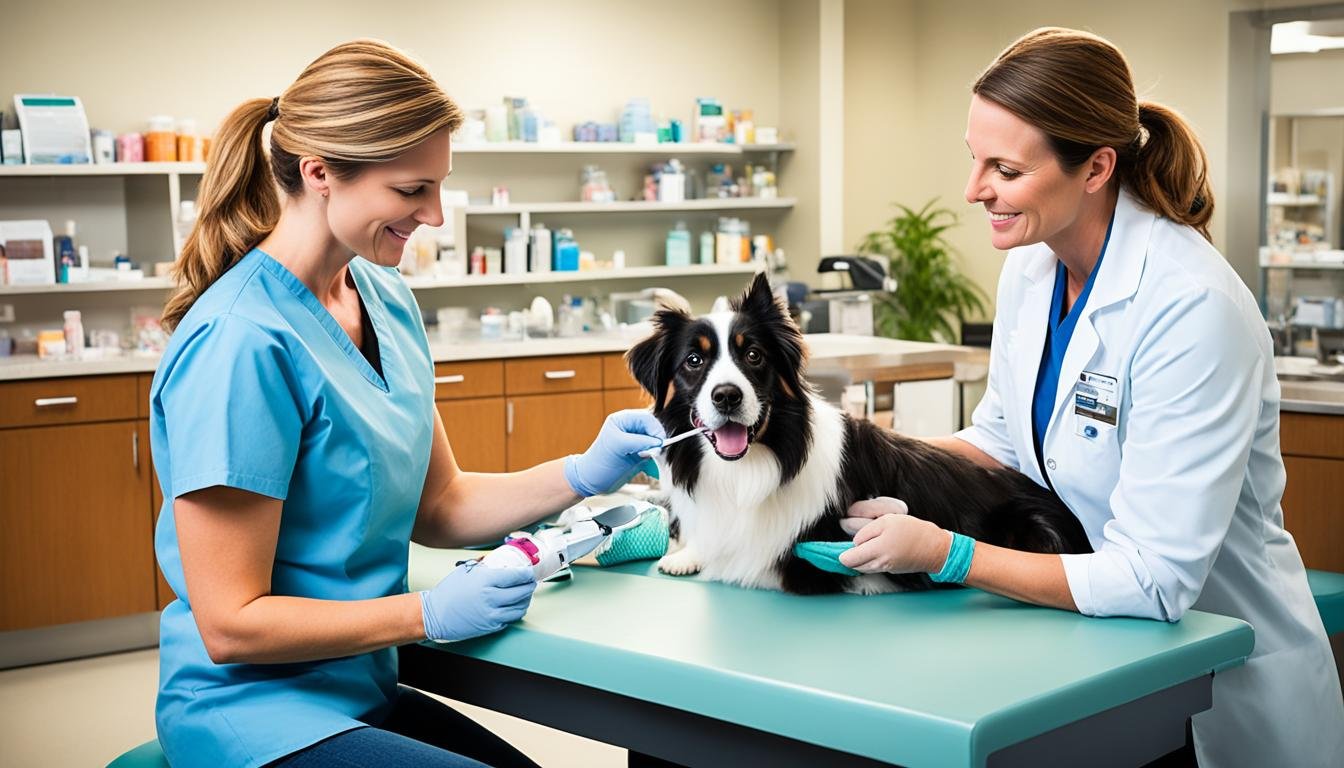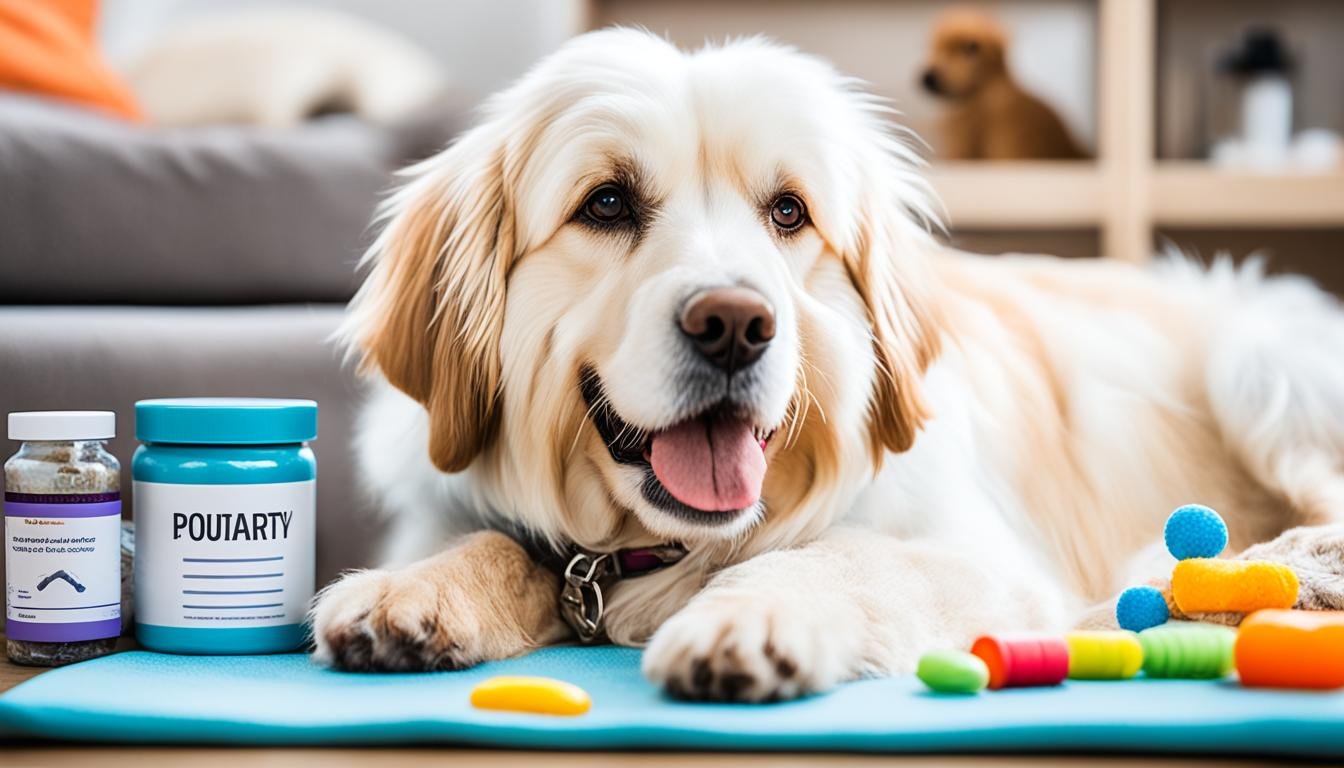
>
Are you one of the millions of pet owners who find themselves sneezing, itching, and suffering from watery eyes whenever your furry friend is around? Don’t worry, you’re not alone! Pet allergies are a common concern that affects numerous individuals worldwide. In this informative article, we will delve into the realm of pet allergies, exploring the symptoms, causes, management strategies, and solutions that can help you and your beloved pet coexist in harmony.
Pet Allergy Symptoms:
Understanding pet allergy symptoms is crucial in determining whether you or your loved ones are experiencing allergic reactions to pets. Symptoms typically include sneezing, itching, nasal congestion, and watery eyes. However, it’s important to differentiate between allergies and other common pet-related conditions to ensure accurate diagnosis and appropriate treatment.
Causes and Triggers of Pet Allergies:
Pet dander plays a significant role as the primary allergen in triggering pet allergies. Understanding how pet dander is produced, its characteristics, and its effect on allergic reactions is essential in managing this condition effectively.
Managing Pet Allergies: Tips and Strategies:
Reducing pet allergens in your environment is essential for managing pet allergies. This section will provide you with practical tips and strategies to create a hypoallergenic environment, minimize pet dander exposure, and establish proper cleaning routines. Regular grooming and air purification are also key elements in alleviating symptoms and ensuring a pet-friendly space.
Pet Allergy Relief: Treatments and Medications:
Discover the range of treatment options available to find relief from pet allergy symptoms. Pet allergy treatments can include over-the-counter medications, prescription drugs, immunotherapy, and alternative therapies. Understanding these options will enable you to choose the most suitable approach for long-term relief.
Pet-Friendly Allergen Control: Creating a Safe Environment:
In this section, we will explore pet-friendly allergen control measures that effectively manage allergens while ensuring the safety and well-being of both pets and humans. From selecting hypoallergenic pets to maintaining proper hygiene, these tips will help you create a harmonious living environment.
Living with Pet Allergies: Coping Strategies and Support:
Coping with pet allergies can be challenging, but you don’t have to face it alone. We’ll provide you with effective strategies for managing pet allergies when visiting places with pets. Additionally, seeking support from allergy specialists and support groups can make a significant difference in navigating the complexities of living with pet allergies.
Whether you’re a seasoned pet owner or considering bringing a pet into your home, understanding pet allergies is vital for a happy and healthy bond with your four-legged companion. Let’s explore the world of pet allergies, finding practical solutions that will allow you to enjoy the love and companionship of your furry friend without the uncomfortable allergic reactions.
Recognizing Pet Allergy Symptoms
If you’re experiencing unexplained sneezing, itching, watery eyes, or nasal congestion, you may be dealing with pet allergies. These symptoms are common indicators of an allergic reaction to pets and can range from mild to severe depending on individual sensitivity.
It’s important to recognize that pet allergies can often be mistaken for other pet-related conditions, such as a common cold or respiratory infection. However, there are distinct differences that can help you determine whether your symptoms are indeed the result of pet allergies:
- Duration of Symptoms: Allergy symptoms tend to persist or recur over time, even in the absence of other illness. If you experience symptoms only in the presence of pets, it’s a strong indication of pet allergies.
- Timing and Triggers: Pay attention to when your symptoms occur and any specific triggers. If they consistently coincide with exposure to pets or pet dander, it’s likely an allergic reaction.
- Response to Medications: If your symptoms improve when taking antihistamines or other allergy medications, it further supports the presence of pet allergies.
Pet allergies are not limited to cats and dogs. Other animals, such as rabbits, guinea pigs, and even birds, can also trigger allergic reactions in susceptible individuals. It’s important to consider all potential allergens when investigating the cause of your symptoms.
Understanding and recognizing the symptoms of pet allergies is the first step towards effectively managing and finding relief from your symptoms. If you suspect you may have pet allergies, consult with a healthcare professional or allergist for proper diagnosis and guidance.
Next in Section 3: Causes and Triggers of Pet Allergies
Causes and Triggers of Pet Allergies
In this section, we delve into the causes and triggers of pet allergies, focusing specifically on pet dander as the primary allergen. Pet allergies occur when the immune system reacts abnormally to certain proteins found in the saliva, urine, or dander of animals such as cats, dogs, or rodents.
Pet dander refers to the microscopic flakes of skin shed by animals. It contains allergenic proteins that can cause allergic reactions in susceptible individuals. When pets groom themselves, their saliva gets deposited on their fur, which then dries out and becomes airborne along with the dander. These tiny particles can easily float in the air and settle on surfaces, triggering allergic reactions when inhaled or touched.
Allergic reactions to pets can vary in severity and may include symptoms such as sneezing, coughing, itching, hives, red eyes, nasal congestion, and even asthma attacks in some cases. Individuals with a predisposition to allergies are more likely to develop pet allergies.
It’s important to note that pet dander can linger in homes or other environments even after the pet has been removed. It can stick to carpets, furniture, bedding, and clothing, making it difficult to completely eliminate allergens.
To better understand the causes and triggers of pet allergies, let’s take a closer look at how pet dander is produced and its characteristics.
How Pet Dander is Produced
Pet dander is constantly shed by animals, much like humans shed dead skin cells. However, some animals, especially those with fur or feathers, produce more dander than others. The frequency and amount of shedding can vary depending on factors such as breed, age, and overall health.

Characteristics of Pet Dander
Pet dander is incredibly lightweight and buoyant, allowing it to remain suspended in the air for extended periods. It is also sticky and can easily adhere to surfaces, making it challenging to remove. These characteristics contribute to the widespread presence of pet dander in indoor environments, even in homes without pets.
Furthermore, pet dander can become trapped in HVAC systems, circulating through the air and exacerbating allergic reactions. It’s essential to implement proper allergen control measures to minimize exposure to pet dander and reduce the risk of allergic reactions.
Pet dander can be a persistent allergen, but with the right strategies, you can manage and minimize its presence in your home.
Managing Pet Allergies: Tips and Strategies
If you or a loved one suffer from pet allergies, managing symptoms and reducing allergens in your environment is essential for a comfortable and healthy life. By implementing these practical tips and strategies, you can create a hypoallergenic space and minimize the impact of pet allergens.
Creating a Hypoallergenic Environment
One of the first steps in managing pet allergies is creating a hypoallergenic environment. Consider the following recommendations:
- Designate pet-free zones in your home, such as bedrooms or certain furniture.
- Invest in hypoallergenic bedding and furniture covers to minimize allergen accumulation.
- Use high-efficiency particulate air (HEPA) filters in your HVAC system to trap pet dander and other allergens.
- Opt for hard-surface flooring instead of carpet, which can trap allergens more easily.
Minimizing Pet Dander Exposure
Pet dander, the primary allergen for most people with pet allergies, can be minimized with proper pet care and maintenance:
- Groom your pets regularly, either by yourself or with the help of a professional groomer. This includes brushing their coats to remove excess dander.
- Consider hypoallergenic breeds that produce fewer allergens.
- Keep your pets out of your bedroom and off furniture, especially those designated as pet-free zones.
- Wash your hands after interacting with pets to remove any allergens present on your skin.
Implementing Proper Cleaning Routines
Regular cleaning is crucial in reducing pet allergens in your home. Follow these cleaning strategies:
- Vacuum your floors, carpets, and furniture regularly using a vacuum cleaner equipped with a HEPA filter.
- Clean and dust surfaces frequently using damp cloths to prevent allergens from becoming airborne.
- Wash pet bedding, blankets, and toys regularly in hot water to eliminate allergens.
- Consider using allergen control sprays that neutralize pet allergens on surfaces.
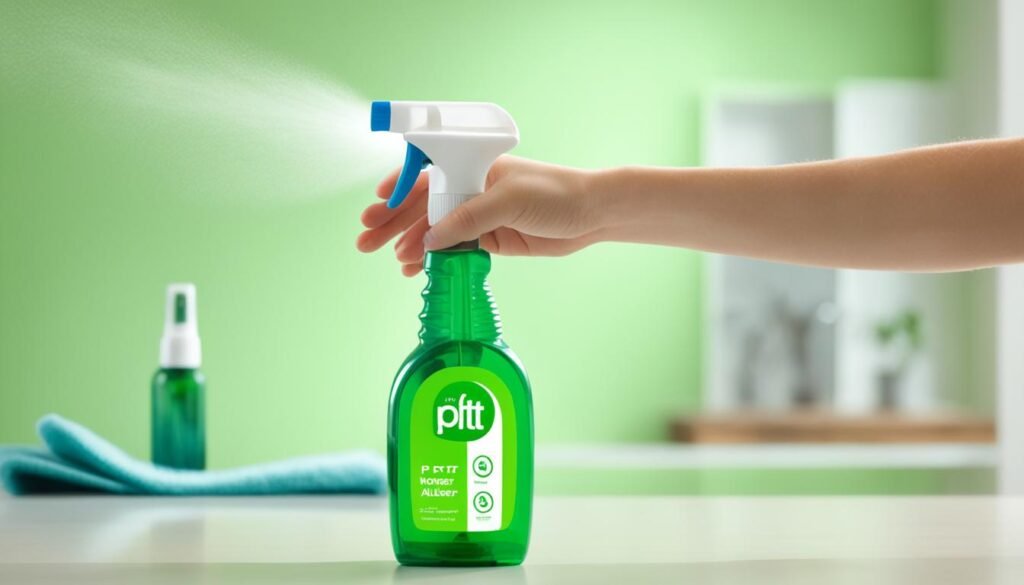
The Importance of Regular Grooming and Air Purification
In addition to basic cleaning routines, regular grooming and air purification can significantly reduce pet allergens:
- Brush your pets outdoors to prevent dander from dispersing indoors.
- Consider bathing your pets regularly, following your veterinarian’s recommendations.
- Use high-quality air purifiers with HEPA filters to remove airborne allergens.
By incorporating these tips and strategies into your daily routine, you can effectively manage pet allergies and create a healthier living environment. However, it’s essential to consult with an allergist or healthcare professional if your symptoms persist or worsen.
Pet Allergy Relief: Treatments and Medications
If you or your loved ones suffer from pet allergies, finding effective relief is essential. In this section, we explore various treatment options that can alleviate pet allergy symptoms and improve your quality of life. From over-the-counter medications to prescription treatments, immunotherapy, and alternative therapies, there are several approaches to consider.
Over-the-Counter Medications
Over-the-counter medications can provide temporary relief from pet allergy symptoms, such as sneezing, itching, and congestion. These medications are readily available and can be used to manage mild to moderate symptoms:
- Antihistamines: They help reduce allergic reactions by blocking the effects of histamine, a chemical released during an allergic response. Common antihistamines include loratadine (Claritin), cetirizine (Zyrtec), and fexofenadine (Allegra).
- Nasal sprays: Nasal sprays containing corticosteroids can alleviate nasal congestion and inflammation caused by pet allergies. Examples of nasal sprays include fluticasone (Flonase) and mometasone (Nasonex).
Prescription Medications
If over-the-counter medications are not providing sufficient relief, your healthcare provider may prescribe stronger medications. These prescription treatments effectively manage moderate to severe pet allergy symptoms:
- Corticosteroids: Prescription-strength nasal sprays, inhalers, or oral medications containing corticosteroids can provide significant relief by reducing inflammation and suppressing immune responses.
- Leukotriene modifiers: These medications help prevent or alleviate pet allergy symptoms by blocking the effects of leukotrienes, which are chemicals that cause inflammation. Montelukast (Singulair) is a common leukotriene modifier.
Immunotherapy
Immunotherapy, also known as allergy shots, is a long-term treatment option for pet allergies. It involves regular injections of small amounts of pet allergens, gradually desensitizing your immune system to reduce allergic reactions. Immunotherapy can provide lasting relief and is particularly beneficial for individuals with severe pet allergies.
Alternative Therapies
In addition to conventional treatments, some individuals find relief from pet allergies through alternative therapies. While scientific evidence may be limited, these therapies are worth considering:
- Acupuncture: Acupuncture involves the insertion of thin needles into specific points on your body, potentially relieving allergy symptoms by stimulating the release of endorphins and modulating immune responses.
- Herbal remedies: Certain herbs, such as butterbur and stinging nettle, are believed to possess antihistamine properties and may provide relief from pet allergy symptoms. However, it is crucial to consult with a healthcare professional before using herbal remedies.
Remember, before starting any new treatment or medication, consult with your healthcare provider to determine the most suitable option for your specific condition and medical history.
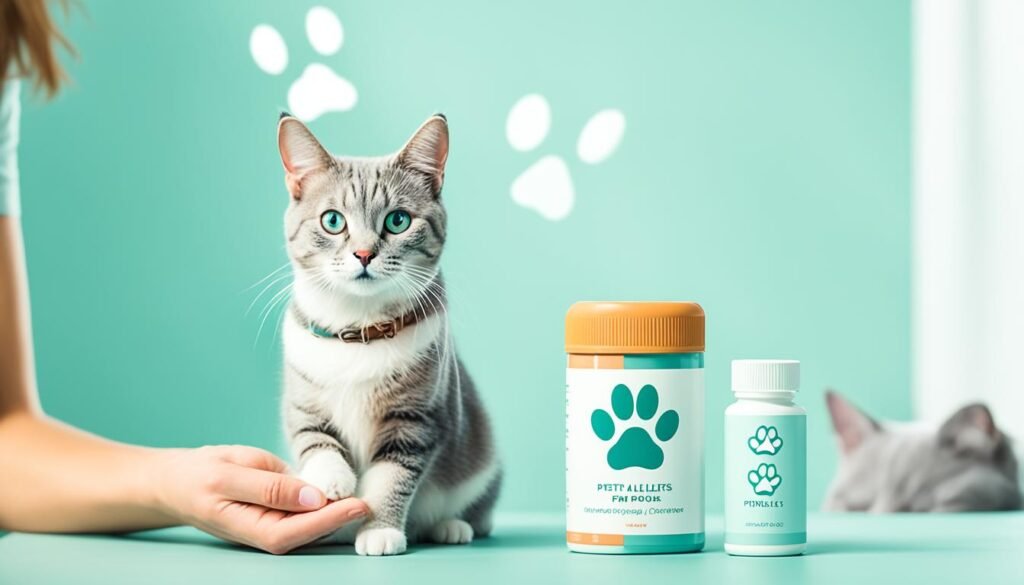
| Treatment | Description |
|---|---|
| Antihistamines | These medications block the effects of histamines, reducing allergic reactions and providing relief from pet allergy symptoms. |
| Nasal sprays | Corticosteroid nasal sprays alleviate nasal congestion and inflammation caused by pet allergies. |
| Corticosteroids | Prescription-strength medications that help manage moderate to severe pet allergy symptoms by reducing inflammation and suppressing immune responses. |
| Leukotriene modifiers | These medications block the effects of leukotrienes, chemicals that cause inflammation, providing relief from pet allergy symptoms. |
| Immunotherapy | A long-term treatment option that involves regular injections of pet allergens to desensitize the immune system and reduce allergic reactions. |
| Acupuncture | An alternative therapy that involves the insertion of thin needles into specific points to potentially relieve pet allergy symptoms. |
| Herbal remedies | Some herbs, such as butterbur and stinging nettle, are believed to possess antihistamine properties and may provide relief from pet allergy symptoms. |
Pet-Friendly Allergen Control: Creating a Safe Environment
Creating a pet-friendly environment is essential for pet owners with allergies. By implementing effective allergen control measures, you can ensure a safe and comfortable living space for both you and your furry friend. Here are some tips for maintaining a pet-friendly allergen-free home:
1. Selecting Hypoallergenic Pets
When choosing a pet, consider hypoallergenic breeds that produce fewer allergens. These breeds often have hair instead of fur, which reduces the amount of dander shed into the environment. Popular hypoallergenic pet options include poodles, certain types of terriers, and the bichon frise.
2. Proper Hygiene and Grooming
Maintain regular pet grooming routines to minimize allergen buildup. This includes brushing your pet’s coat outside, bathing them regularly with hypoallergenic pet shampoos, and keeping their bedding clean. Additionally, consider investing in a high-quality vacuum cleaner with a HEPA filter to effectively remove pet dander and allergens from carpets and upholstery.
3. Allergen Control Measures
Implementing allergen control measures in your home can significantly reduce pet allergens in the environment. Use pet-safe allergy solutions, such as pet-safe air purifiers, to filter out airborne allergens. Wash pet bedding frequently using hot water and allergen-reducing laundry detergents. Consider using allergen-blocking covers on mattresses, pillows, and upholstery to prevent allergen accumulation.
“Creating a pet-friendly environment that prioritizes allergen control is crucial for individuals with pet allergies.”
Remember, it’s important to pay attention to your own allergies and seek medical advice from allergists or healthcare professionals. They can provide personalized recommendations and allergy treatments based on your specific needs. By following these pet-friendly allergen control strategies, you can enjoy the companionship of a pet without suffering from severe allergic reactions.
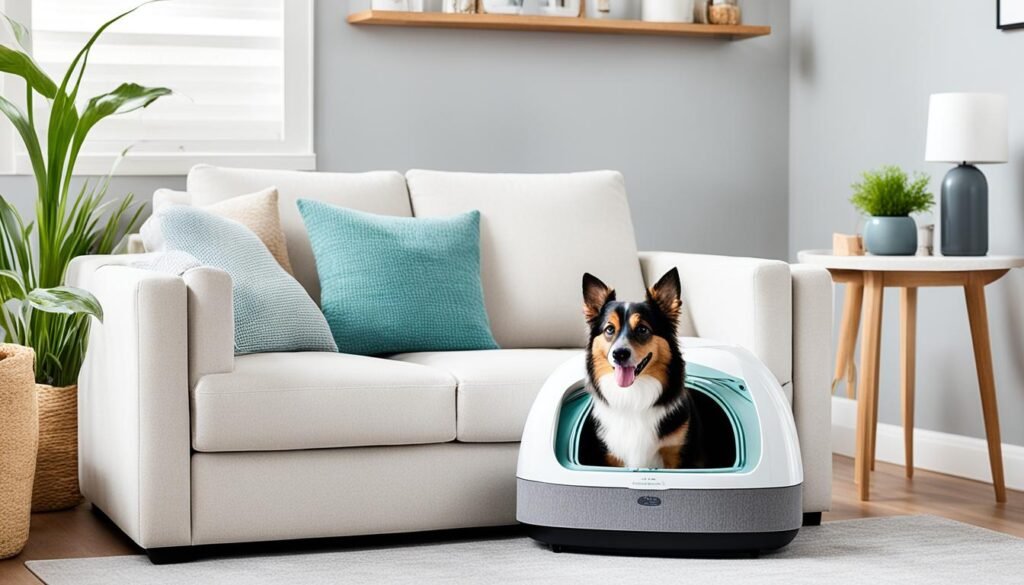
Living with Pet Allergies: Coping Strategies and Support
Managing pet allergies can be challenging, but with the right coping strategies and support, individuals can find relief and enjoy a fulfilling life with their furry friends. One effective way to reduce allergen exposure when visiting places with pets is by taking proactive steps.
First, it’s essential to inform friends, family, and hosts about your allergies in advance. This allows them to take precautions, such as keeping pets in designated areas or having a pet-free zone, to minimize your exposure to allergens. Additionally, you can consider carrying allergy medication or using preventive nasal sprays before going to these places.
Seeking support from allergy specialists is another vital aspect of managing pet allergies. These experts can provide personalized advice on dealing with allergies, recommend appropriate medications, and suggest allergen avoidance strategies. They can also help identify specific triggers and provide guidance on reducing pet allergens in your home environment.
Support groups can also play a crucial role in helping individuals cope with pet allergies. These communities provide a platform to connect with others facing similar challenges and share experiences, tips, and emotional support. Joining online forums or attending local support group meetings can be immensely beneficial for finding understanding, guidance, and encouragement along your allergy journey.
FAQ
What are the common symptoms of pet allergies?
Are there any differences between pet allergies and other pet-related conditions?
What causes pet allergies and what are the triggers?
How can I manage pet allergies and reduce allergens in my home?
What treatments and medications are available for pet allergy relief?
Can immunotherapy or alternative therapies provide long-term relief for pet allergies?
How can I create a pet-friendly environment while controlling allergens?
What coping strategies and support are available for individuals with pet allergies?
RELATED POSTS
View all
